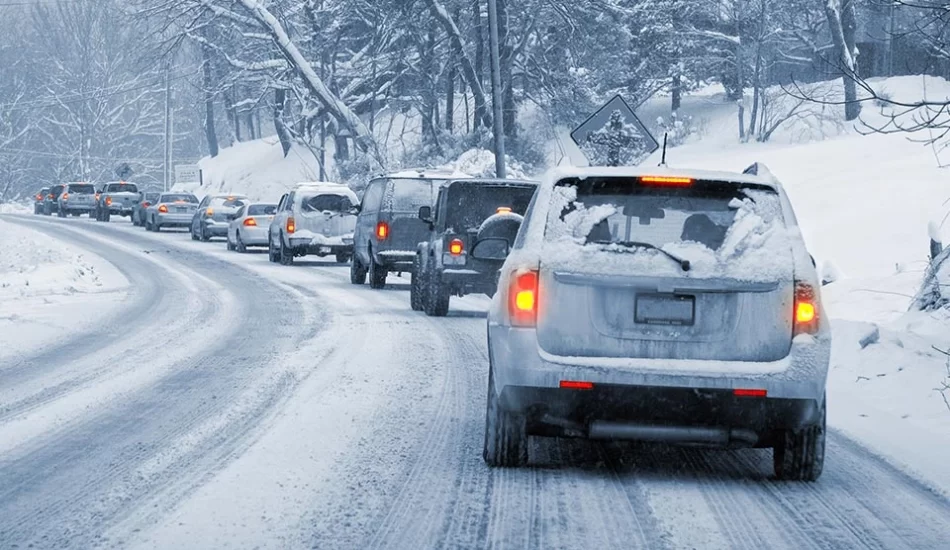Missouri Troopers Share Advice after Multi-Vehicle Pile-up Near Lee’s Summit, MO

Forty-Seven Vehicles Involved in Large Pile-Up
As many people dig out of their driveways in northern Missouri, most of us are aware of the tragic multi-car pile up last Friday. A Platte City woman was killed and a 74 year-old driver was seriously injured. In the aftermath of this truck and car crash, the Missouri State Highway Patrol (MSHP) is encouraging drivers to use more caution on the roadways.
According to MSHP Sergeant Collin Stosberg said, “poor visibility and road conditions caused a semi-truck to jack-knife on I-70 westbound near Oak Grove, which led to the pile up”. Stosberg also said that secondary crashes can be worse than the initial crash. The MSHP also offers some advice after the analysis of the pileup.
- Slow Down. You should slow down and increase the space between the car and the vehicle in front of you. You have to be driving slow enough to keep control of your car
- Increase following distance – under normal condition, one should keep one car-length’s distance for every 10 miles per hour one is traveling. For example, if you are traveling 30 mph, you should be three car-lengths between you and the car in front of you. In snowy weather, you should increase that distance in order to have time and space to react to anything that happens on the roadway.
We all see cautious motorists and we see reckless drivers. Sergeant Stosberg pointed out that just because you have four-wheel drive, it does not mean that you can drive as if conditions are normal on a snowy road. Stosberg said, “When it is icy and snowy, stopping distance is the same: it’s pretty much nonexistent.” Slowing down on snow-covered highway increases safety. Stosberg said that many of the vehicles involved in the pile-up were simply traveling too fast for conditions and did not have time to react and avoid crashing.
Troopers Stopped Cars Traveling 80-90 MPH on Saturday Morning in the Greater KC Area
After the events of last Friday evening and the heavy snowfall, troopers were surprised they had to stop drivers that were traveling 80-90 mph as early as Saturday morning when the roads were still snowy and inclement. Stosberg said, “It makes you scratch your head and wonder what people are thinking.” If you saw the now infamous video footage of the pile up, you saw the speed at which those vehicles were traveling into the pile-up. While watching it, even the person shooting the video was dumbfounded. I’ve chosen not to share that video once I learned there was a fatality and a serious injury.
Advice for Commercial Drivers is Good Advice for All Drivers
According to the FMCSA (Federal Motor Carrier Safety Administration), driving to fast for conditions is defined as traveling at a speed that is greater than a reasonable standard for safe driving. Examples of conditions when drivers find themselves driving to fast include wet roadways including rain, snow or ice; reduced visibility, uneven roads, construction zones, curves, intersections, gravel roads and heavy traffic. According to FMCSA statistics, 23% of large-truck crashes occurred when commercial motor vehicle drivers were traveling too fast for conditions. This is a huge problem as commercial vehicles are enormous and exact a lot of damage on passenger vehicles when they collide. Furthermore, they found that excessive speeds in adverse weather condition were involved in 25% of the large truck fatalities.
- You should reduce your speed by 1/3 on wet roads and by 1/2 or more on snow packed roads. Thus, if you normally travel 70 mph on Interstate 70, you should reduce your speed to 45 mph on snowy roads. If you do have four-wheel drive, you will find that your vehicle performs far better when you slow down on ice and snow. Slowing down increases your ability to maintain control of your vehicle
- Enter curves slowly. Forty percent of speed-related fatalities occur on curves. Furthermore, braking in a curve can cause the wheels to lock up and the vehicle
- Reduce your speed before entering an exit/entrance ramp
- Slow down in work zones
Use Common Sense that Seems to Not Be So Common
Most all of us have traveled on Interstate 70 and frankly, it can be very dangerous in any season when roads may be dry. Often we see drivers speeding excessively, tail gaiting and crossing several lanes of traffic to make an exit (or so it appears). Yes, the speed limit is 70 mph in most places on Interstate 70 with the exception of city limit boundaries. More than once I have driven on Interstate 70 when weather has turned bad and I’m simply amazed that people speed past me. I don’t like to waste time on the highway, but I do want to actually want to reach my destination safely. Speeding on snowy roads doesn’t just increase your likelihood of going into the ditch, it increases your likelihood of being in a crash.
Motor vehicle crashes on interstates are generally very serious in nature due to the speed at which the vehicles travel. When inclement weather is added, the crashes can become more numerous and there can be secondary crashes quite easily.
If you are involved in a crash on the highway or interstate, the MSHP says to stay in your vehicle, wear your seatbelt and dial *55 to contact the closest highway patrol headquarters.
Additionally, SLOW DOWN and BUCKLE UP!
If you are injured in a crash, you will need legal assistance. Call us toll free 1.800.685.3302 or locally 314.257.0253
Contact Us Today
The Cagle Law Firm serves accident and injury clients throughout St. Louis and the greater St. Louis metropolitan area, including the eastern Missouri and southern Illinois communities. If you or a loved one needs legal assistance with your personal injury case, call The Cagle Law Firm at (314) 276-1681 or use our online contact form to schedule a free consultation.
Areas Served
The Cagle Law Firm – Missouri
The Cagle Law Firm – Illinois
The Cagle Law Firm – Kentucky
CONTACT THE CAGLE LAW FIRM TODAY
Schedule your FREE CONSULTATION today by contacting us at (314) 276-1681 or by sending us an email through the online contact form.
Contact Us Today
Request Your Free Consultation
Fields marked with an * are required
Copyright © 2024 The Cagle Law Firm. All rights reserved.





